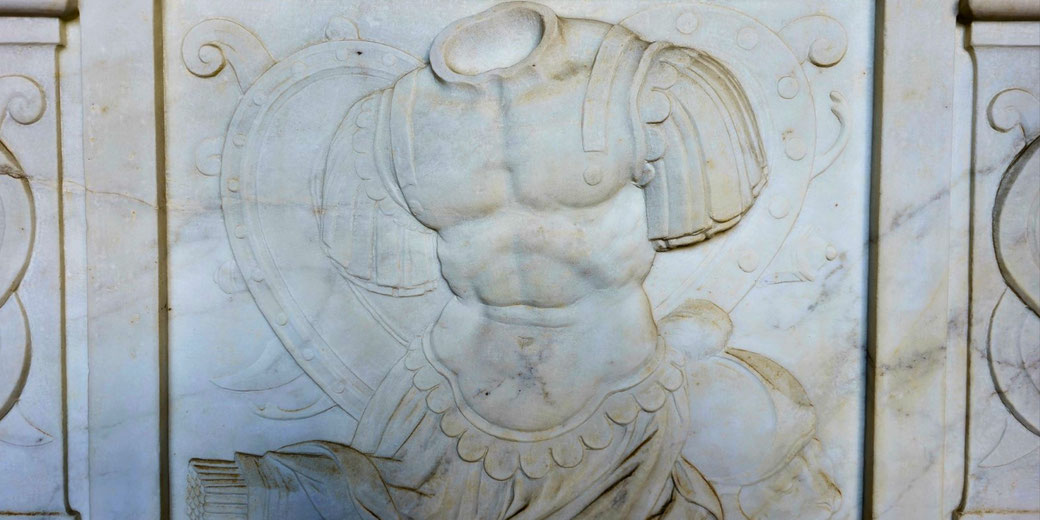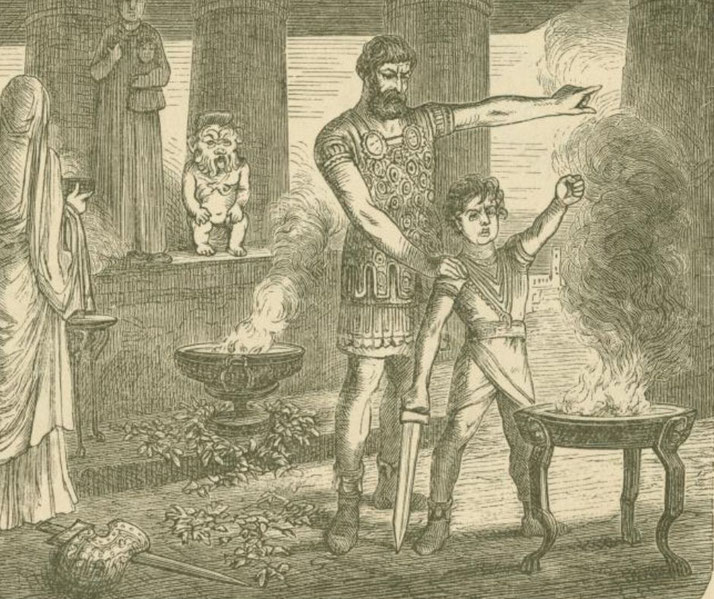What happened between the First and Second Punic Wars?

Carthage was a powerful empire that controlled much of the Mediterranean during the 3rd century BC. However, this period in Carthaginian history saw it fight two major conflicts against Rome, known as the First and Second Punic Wars.
In this article, we will explore what happened to Carthage after their defeat in the First Punic War, and how one important Carthaginian general, Hamilcar Barca, invaded Iberia in order to rebuild its empire.
Why did Carthage lose the First Punic War?
In the 3rd century BC, both Rome and Carthage were powerful empires that had increasing tensions over who would be the dominant power in the western Mediterranean.
In 264 BC, the first of the Punic Wars broke out when both Rome and Carthage fought over the city of Messana in Sicily.
The Carthaginians relied upon their navy to try and seize an early victory in the conflict, while Rome's strength lay with its land forces.
However, Rome was able to quickly build their own navy by copying Carthaginian ship designs and came to dominate the waves.
After a series of costly defeats on land and sea, Carthage had to admit defeat in the First Punic War in 241 BC.
The city of Carthage instructed Hamilcar to negotiate the surrender terms with Rome, which he did successfully through his subordinate, Gisco.
The resulting agreement was known as the Treaty of Lutatius, which brought to an end the 23-year conflict between Carthage and Rome.
With the war completed, Hamilcar resigned his military command. However, a new crisis in Carthage would mean that his services were called upon very soon after.

Carthage's economic crisis
After the First Punic War, Carthage had to give up its lucrative territories in Sicily and pay a large indemnity to Rome.
This left the empire greatly weakened, and it was no longer able to compete with Rome on an equal footing.
The devastation of the Carthaginian economy following their defeat also meant that they could no longer pay their army, which was primarily comprised of mercenaries.
Carthage had relied upon mercenaries to a great extent since the early days of their empire.
In 241 BC, Carthage's mercenary army revolted and began the Mercenary War.
The conflict lasted for three years and ended with a crushing victory for Carthage.
It was an incredibly brutal war, with both sides committing horrible atrocities on captured soldiers.
The mercenary forces mutilated Carthaginian prisoners, and even Hamilcar had some of his captives trampled upon by war elephants as a punishment.
By the end of the conflict, the war had taken a great toll on the empire, both in terms of lives lost and economically.
However, by its completion in 238 BC, Carthage had regained control of its north African empire.
The rise of Hamilcar Barca
One of the most important Carthaginian generals at this time was Hamilcar Barca.
He had been a successful general during the First Punic War and was determined to rebuild Carthage's strength in order to stand up to further Roman aggression.
While Hamilcar had developed a good reputation as a general during the First Punic War, it was his activities during the Mercenary War that won him most of his acclaim.
Many Carthaginians believed that it was only due to Hamilcar's pragmatic leadership that they were able to put down the rebellion and restore order to the empire.
In order to accomplish his victory, Hamilcar embarked upon a series of military campaigns in North Africa.
His first campaign was against the city of Utica, which had defied Carthaginian authority following the First Punic War.
He quickly regained control of the city. Following a series of military successes, Hamilcar became the overall commander of Carthage's armies and was instrumental in the war.
As a result, Hamilcar and his Barcid family line dominated the Carthaginian political scene for almost 35 years.
The Barcid expedition to Iberia
In order to try and rebuild its empire, Carthage needed to find new sources of income and territory.
In 238 BC, Hamilcar Barca was given command of an expeditionary force and sent to invade the Iberian Peninsula (modern Spain).
The Iberian Peninsula was rich in natural resources such as silver and tin, which could be vital in Carthage's future economic recovery.
Hamilcar's successful campaign resulted in the establishment of the Carthaginian province of Hispania.
Hamilcar probably landed in southern Spain in the summer of 237 BC, and he established a base of operations at Gades (modern Cadiz).
Some of the local tribes were happy to become Carthaginian allies, and Hamilcar recruited around 25,000 local soldiers to fight for him.
His forces were as large as 50,000 men at this stage, and included the famous Numidian cavalry from North Africa, as well as 100 war elephants.
Hamilcar then rapidly expanded his control over local Iberian kingdoms by using both brutal military strikes, as well as shrewd diplomacy policies.
In the space of five years, Hamilcar controlled most of southern Spain. The wealth generated from these conquests was sent back to Carthage, and his power grew.
Some politicians back in Carthage began to worry that he was becoming too powerful and accused Hamilcar of creating his own personal kingdom in Spain.
Hamilcar's focus on land battles instead of traditional naval power also made many uncomfortable.
The dramatic childhood of Hannibal Barca
Hamilcar took his young son with him for the Iberian campaign. The son was called Hannibal, and he would go on to become one of the most famous Carthaginian generals.
Around the time that he launched his invasion of Iberia in 237 BC, Hamilcar had taken the nine-year-old Hannibal to the temple of Baal in Carthage and made him swear an oath that he would never be a friend of Rome.
This oath would later motivate Hannibal to lead the Carthaginian army against Rome in the Second Punic War.
Hannibal spent his childhood in Iberia, and it was here that he developed his skills as a military commander.
In 229 BC, Hamilcar died while crossing the Baetis River (modern Guadalquivir) after a battle against the Celtiberian tribe of the Lusitani.

The creation of New Carthage
After Hamilcar's death in 229 BC, his son-in-law Hasdrubal the Fair continued the conquest of Iberia.
In 228 BC, he established a new capital for the Carthaginian province at a strategic location on the coast, which he named New Carthage (modern day Cartagena).
New Carthage quickly became an important hub for trade and commerce and was vital to Carthage's plans for rebuilding its empire.
Then, in 221 BC, Hasdrubal was replaced by Hannibal as the commander of the Iberian territories.
How Carthage prepared for another war with Rome
The conquest of Iberia by the Carthaginians had not gone unnoticed by the Romans.
Rome had been steadily growing in power and influence and was now the most powerful state in the western Mediterranean.
The Carthaginian expansion into Iberia threatened Rome's assumed dominance in the region.
Both Rome's suspicions of a resurgent Carthaginian empire, and Hannibal's own promise to his father to never befriend Rome, set the stage for the Second Punic War.
Further reading
What do you need help with?
Download ready-to-use digital learning resources
Copyright © History Skills 2014-2025.
Contact via email
With the exception of links to external sites, some historical sources and extracts from specific publications, all content on this website is copyrighted by History Skills. This content may not be copied, republished or redistributed without written permission from the website creator. Please use the Contact page to obtain relevant permission.





